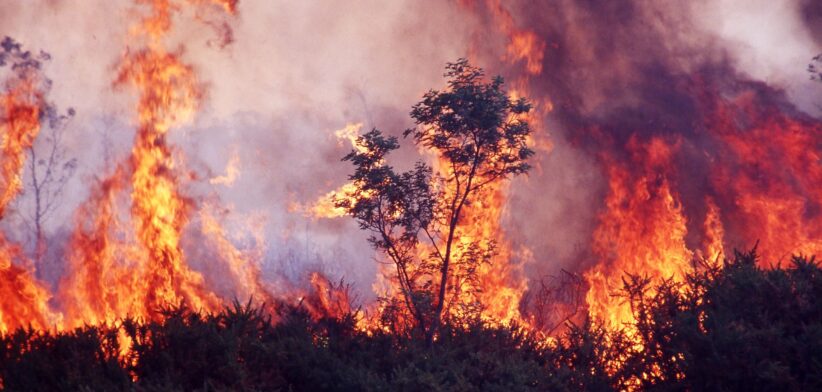More intense bushfires and sustained heatwaves are joining cyclones to form the trinity of devastation, as Queensland is labelled Australia’s most disaster-prone state.
A new report from Emergency Leaders for Climate Action states long-term projections showed climate change would bring more hot days and nights, more extreme bushfires and fewer, but more intense, cyclones to Queensland over the coming decades.
Emergency Leaders for Climate Action founding member and former Queensland Fire Commissioner Lee Johnson said the report, State of Queensland: Disaster Ground Zero, comes as the Spring 2024 Seasonal Bushfire Outlook showed a fire risk for large parts of far north Queensland, including for Cape York, Peninsula Areas and Tropical Coast, as well as central and southern areas, particularly the Darling Downs.
“Queensland is known as a cyclone state, but it is increasingly a bushfire state as climate pollution fuels more extreme and erratic weather conditions,” Mr Johnson said.
“Not only are fires more dangerous in Queensland now, they’re also less predictable. Last year was the state’s most destructive fire season on record, with more than 1000 blazes burning in October. The town of Tara, Western Downs, lost 59 homes to fires, more than were lost in the whole state during the Black Summer bushfires.”
Mr Johnson said to protect more Queenslanders from worsening unnatural disasters the Queensland Government needed to stop approving new and expanded coal and gas projects, grow the state’s firefighting capacity, particularly volunteer firefighters, and continue to help households and communities better prepare for future climate risks.
“Every cut to climate pollution helps make Queensland safer for our children.”
Mr Johnson said the report detailed a number of key findings and statistics, including:
- Since 1910, average temperatures in Queensland have increased by more than 1.5°C.
- Climate change is disrupting the natural ‘climate drivers’ that influence Queensland’s weather patterns, like the El Niño-Southern Oscillation that swings between El Niño and La Niña. The latest research indicates that this could be shortening periods between drought, extreme rainfall and flooding.
- Most Queenslanders have experienced one or more floods (70 percent), heatwaves (86 percent) and/or cyclones and destructive storms (57 percent) within the past five years, a higher proportion of people than in any other state or territory.
- Half (52 percent) of all Queenslanders have been forced to relocate due to disaster, or know someone else who has, over the past five years.
- Since the early 2000s, the Queensland Fire Department has noted an increase in the frequency, severity, size and property damage of bushfires in Queensland that culminated in the unprecedented 2023 fire season.
- From August to November 2023, fires burned 1.36 million hectares of land. This impacted a third of Queensland’s local government areas, claimed five lives and destroyed more than 180 structures, including 74 homes.
- Warmer than usual overnight temperatures made the 2023 bushfires more difficult to contain, with five times more night-time hot spots than usual in the South East and Western Downs regions.
- Climate change was making heatwaves hotter, last longer and occur more often. Heatwaves like those that hit Queenslanders from November 2023 to January 2024 are considered a ‘silent killer’ of Queenslanders, increasing ambulance calls by 12 percent and claiming 100 lives every year.
- Global ocean warming is also driving more frequent, severe and longer-lasting marine heatwaves, resulting in mass bleaching events on the Great Barrier Reef in five of the past eight summers.
- Climate change is rapidly transforming our ocean, which has absorbed 93 percent of the excess heat trapped by climate pollution. The rate of ocean warming has more than doubled since the mid-1990s, and today the ocean is absorbing enough excess heat to boil Sydney Harbour every eight minutes.
- For every degree of additional warming, the atmosphere can hold seven percent more water vapour, which fuels extreme rainfall events and provides more energy for powerful cyclones. Warmer sea surface temperatures are also linked to the destructiveness of tropical cyclones, by increasing intensity, rainfall and storm surge.








